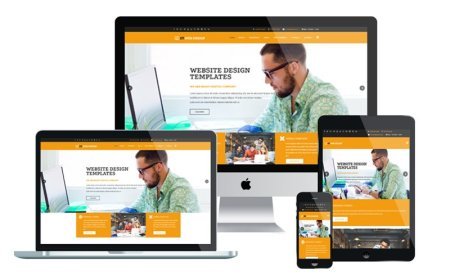The Future of Education: Virtual Classrooms Redefining Learning

In the past, the mere mention of a classroom made us think of a four-walled class where students were sitting in rows and a teacher addressed them at the front. But today’s classroom doesn’t look like this. Gone are the days when traditional classrooms were the sole bastions of learning. The learners of today have the flexibility to access high-quality education anytime, anywhere with the help of virtual classrooms.
In this blog, we will explore the top five reasons why higher education institutions should adopt virtual classrooms Let’s begin-
It offers Immersive Learning Environments
With the traditional learning approach, the students have to depend on the textbook’s static images, long text, and lectures to learn about a topic. In contrast to this, in a virtual classroom, the students are allowed to get immersed in a virtual environment that replicates the like-like scenarios.
Here, they can experience the concepts and develop a deeper understanding rather than just reading about them.
For example, with a virtual classroom for VR engineering, budding engineers can step inside the complex machines and look at their components. Not only this, but, they can disassemble and reassemble them in the virtual environment and know how it works.
With VR classrooms, history students can go back in time to witness pivotal historical events or biology students can dive deep into the complexities of molecular structures through interactive simulations.
With such a hands-on approach in virtual classrooms, educators can foster deeper understanding and retention of information among students.
According to a study by PwC, using VR in virtual classrooms can improve retention rates by up to 75% compared to traditional learning methods. This number underscores the efficacy of immersive environments in enhancing learning outcomes by making education more engaging and relatable.
It focuses on Personalized and Adaptive Learning
At one place where conventional teaching methods stick with the one-size-fits-all approach, virtual classrooms have emerged as a beam for personalized and adaptive learning that caters to individual learning styles and paces.
By leveraging sophisticated adaptive learning algorithms, virtual classrooms discern the proficiency level of the student and craft the content tailored to their unique learning style.
This nuanced approach transcends the limitations of traditional education and creates a supportive environment for them where they can navigate concepts at their own pace.
Be it about accelerating their learning speed through familiar topics or revisiting challenging areas, students gain benefits from targeted instruction that reinforces understanding and cultivates mastery.
Consequently, these virtual learning classrooms not only provide an opportunity to increase enhancement among students but also empower students with the autonomy to chart their learning journey. Thus, ensuring optimal educational outcomes tailored to individual needs.
It is Flexible
It doesn't matter if you hail from a remote area or any corner of the globe, the virtual classrooms have democratized access to global experiences.
With virtual learning classrooms, students can go on an immersive global exploration without leaving the comfort of their homes. Just imagine a geography lesson where students can traverse the Amazon Rainforest, navigating its lush greenery and diverse ecosystems.
You can also envision an astronomy class that propels students to distant galaxies, allowing them to witness the marvels of the cosmos firsthand.
All these immersive experiences in virtual classrooms not only captivate the imaginations of the students but also foster global awareness and empathy.
Virtual classrooms become portals to a world without borders, where cultural exchange and understanding are not limited by any geography, providing an enriching educational experience that is not restricted by physical limitations.
It’s more Cost-Effective than Traditional Learning
Integration of virtual reality-equipped virtual classrooms into higher education institutions offers a cost-effective alternative to traditional teaching methods.
Though initial setup costs for Virtual classrooms may appear significant, they pale in comparison to the long-term savings. Virtual classrooms nullify the expenses tied to physical infrastructure, transportation, and ongoing maintenance typical of conventional learning spaces.
This streamlined approach not only reduces operational expenses but also enhances scalability, accommodating a broader spectrum of learners.
Not to forget that with the constant advancement in technology, VR solutions are becoming increasingly accessible and affordable, democratizing educational resources globally.
Such a levelling of the playing field ensures that institutions, regardless of their economic standing, can harness the transformative power of virtual classrooms, thereby fostering a more inclusive and sustainable future for education.
It Addresses Diverse Learning Needs
Virtual classrooms offer tailored interventions and support mechanisms that cater to students with varying abilities and learning styles.
For students with certain learning disabilities, virtual classrooms provide personalized learning experiences, accommodating their unique needs and facilitating academic growth. Conversely, specialized students can leverage virtual reality environments to delve deeper into advanced concepts, surpassing the limitations of traditional curricula.
By integrating adaptive technologies and individualized instruction, virtual classrooms ensure that every student, regardless of their abilities or challenges, has the opportunity to thrive academically. This inclusivity not only enhances learning outcomes but also cultivates a supportive and equitable educational ecosystem, paving the way for a more diverse and enriched learning experience for all.
Conclusion
To conclude, virtual classrooms have opened the doors to an innovative, engaging, and inclusive approach to learning. By adopting virtual classrooms, educators and students can unlock a unique world full of opportunities. As we continue to navigate the future of education, let us embrace the potential of virtual learning classrooms and ensure that every student has access to a relevant and enriching learning experience.
Are you ready for this?
What's Your Reaction?



























































